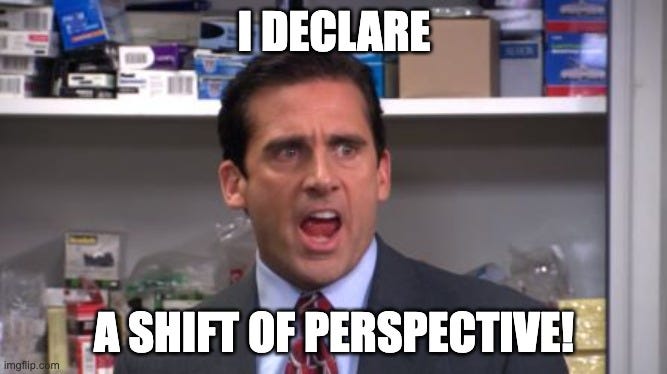Eureka Moments In Business Are Rarely Ever That
There's a lot more that happens before the moment even arrives
Implementing lessons from business non-fiction books can be hard. Glamorous case-studies from unrelated industries while entertaining can distract from the abstract principles at play. In this series of articles, I bring focus to these principles. I hope this simplification and my real-world perspective, helps you build habits and mindsets that help you grow professionally. TL;DR and quotes at the end.
Today, I discuss the second chapter of Richard Rumelt’s Good Strategy/Bad Strategy — The Difference And Why It Matters. In case you’d like to read the first chapter’s summary here it is.
How Walmart Changed The Game
Sam Walton and Walmart’s success is generally attributed to their use of technology driven cost innovations. Rumelt believes K-mart, Walmart’s largest competitor could (and did in parts) use similar technology. Why then, did K-mart file for bankruptcy in 2002? Technology alone, couldn’t have been Walmart’s competitive edge. The edge had to be something K-mart couldn’t easily copy. Rumelt believes, Walmart brought a fresh perspective to retail discounting. This was their edge.
Principle 1
“The second natural advantage of many good strategies comes from insight into new sources of strength and weakness, Looking at things from a different or fresh perspective can reveal new realms of advantage and opportunity as well as weakness and threat.
They had fundamentally changed the way they looked at discount retailing. Walmart derived cost efficiencies by changing its ‘unit of management’ from stores to networks of stores.By that I mean a ‘manager’ was responsible for the P&L of a network of stores, not a single store. The network’s aggregated demand, in-bound logistics optimization, and supplier relationships drove cost efficiencies. The scope for driving costs down had been widened by this ‘shift of perspective’.
K-mart’s managers, on the other hand, only managed their own store’s P&L. Each store sold to densely populated areas. More customers → more demand → greater negotiating power with suppliers. The store was their ‘unit of management’. And, why not? It had been working. But as long as decentralised management continued, the duplication of Walmart’s cost innovations would only benefit a single K-mart store, not all.
Reading Between The Lines
What does a non-retail professional learn from here? A shift of perspective could mean many things that don’t involve ‘networks of stores’. Apple’s focus on design was a shifted perspective. Then again, so was Adam Neumann’s (of WeWork infamy) take on real estate. I’ve personally, observed several leaders recognize the need for a ‘fresh perspective’. So they hire young, energetic MBAs unburdened by experience, but fail to change how they make decisions themselves.
What’s the takeaway here? Should we just walk into office and declare a ‘shift of perspective’, all Michael Scottesque?
Probably not. Such perspective shifts are rarely, if ever, epiphanies. They are the result of pain-staking data collection and analysis. Insights from said analysis need to be summarized and plans created for reading and decision making by upper management. Most execs at large firms may scoff at this approach - ‘We don’t have the time for this’. But, most companies don’t do so great. Even Sam Walton would admit, if conditions weren’t right, the total efficiencies from Walmart’s new approach may have been lesser than K-mart’s. The benefits of a network aren’t as intuitive as the book, or this article would make you think. I speculate somebody crunched the numbers. Rumelt doesn’t quite mention this.
For the management professional reading the book or my summary, this is the hidden take-away. Build the analytical skills and create the processes that help you find that ‘shift of perspective’. And, find companies that value this approach. As Rumelt points out later, most companies don’t. Because it isn’t easy. Trying to explain the importance of data and analysis to leadership that doesn’t value it would be pointless.
TL;DR
Changing how an industry and competition is viewed can reveal new sources of strength, weakness, opportunity and threat. But shifting perspective for the sake of it, can be dangerous at worst, inefficient at best. A perspective shift needs to be backed by rigorous analysis of data and smart decision making (among several other things). If a management professional wants to bring about such a perspective shift, he should build the analytical skills and processes that help them uncover the right perspective shift.
What are some examples of perspective shifts that you’ve observed in business? How did you get to them? The readers would like to hear! If you thought the insight from this article was trivial, I’d love to hear! If you thought it was interesting, I’d love to hear that too. Duh.
Great Quotes From The Chapter
No summaries. Just copy and paste from here on.
“Half of what alert participants learn in a strategy exercise is to consider the competition even when no one tells you to do in advance.”
“Whenever an organization succeeds greatly, there is also, at the same time, either blocked or failed competition.”
“Many competitors do not have much of a design, shaping each of their elements around some imagined “best practice” form.”
“A large organization may balk at adopting a new technique, but such change is manageable. But breaking with doctrine - with one’s basic philosophy - is rate abset a near-death experience,”
“And, most important, it argued that having a true competitive strategy meant engaging in actions that imposed exorbitant costs on the other side.”
Source
Rumelt, Richard.Good Strategy/Bad Strategy — The Difference And Why It Matters. Crown, 2011.





